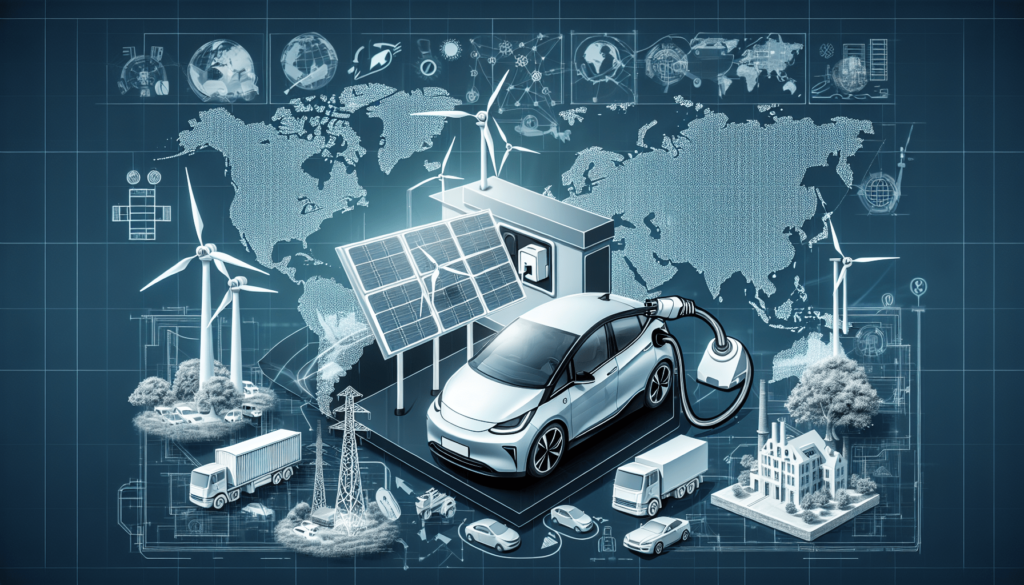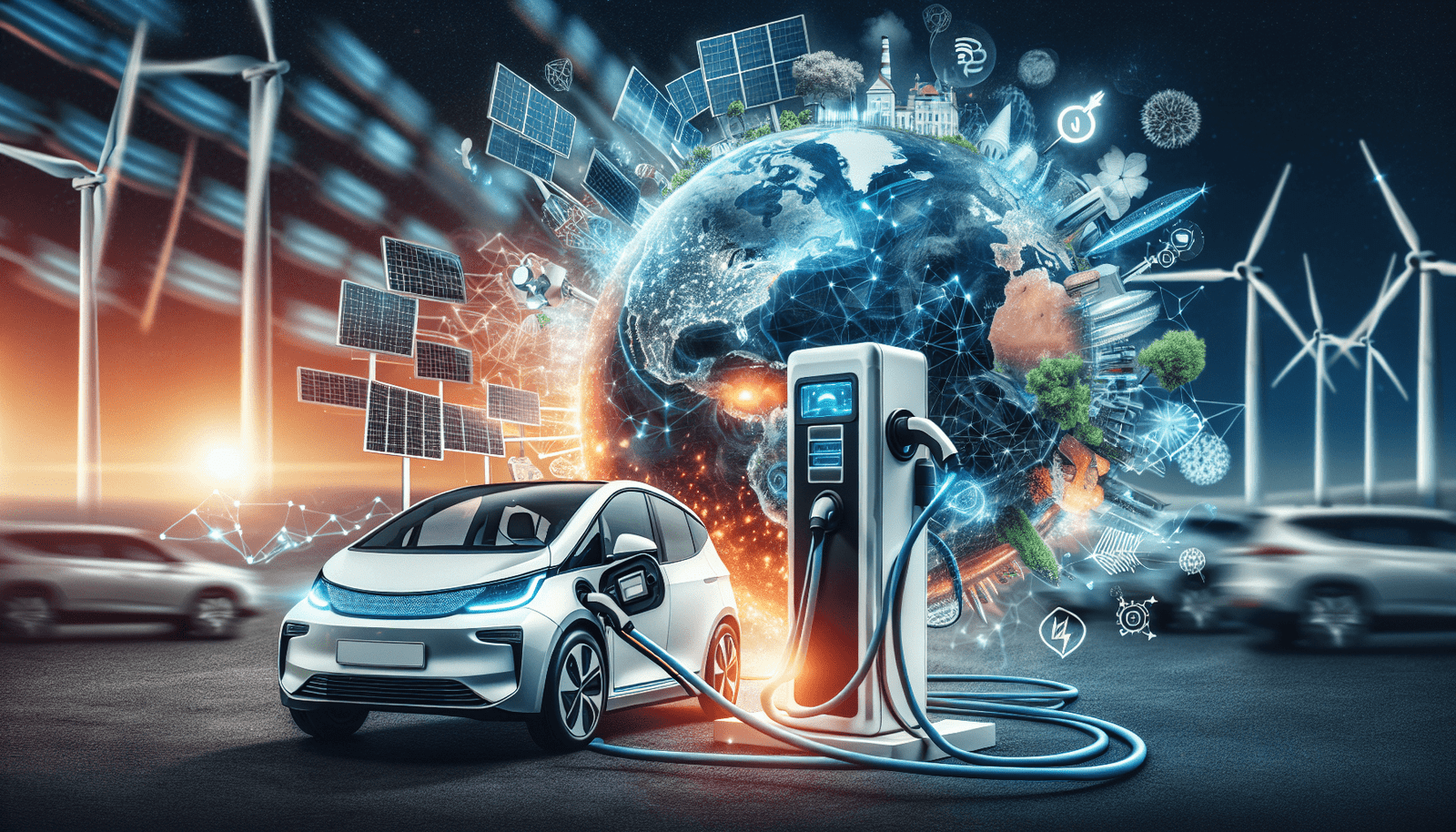Have you ever wondered how electric vehicles impact the consumption of energy on a larger scale? With the rise in popularity of electric cars, it’s important to understand their impact on overall energy usage. In this article, we will explore the various ways electric vehicles affect energy consumption and how this can potentially shape the future of transportation. From their potential to reduce greenhouse gas emissions to the advancements in charging infrastructure, join us as we delve into the fascinating world of electric vehicles and their impact on energy consumption.

Introduction
Electric vehicles (EVs) have gained significant attention in recent years due to their potential to revolutionize the transportation industry and reduce greenhouse gas emissions. As the world shifts towards more sustainable practices, the discussion around energy consumption and its impact on the environment becomes increasingly important. In this comprehensive article, we will explore various aspects of electric vehicles, including their definition, types, energy consumption, comparison with internal combustion vehicles, impact on the energy grid, renewable energy integration, lifecycle analysis, benefits, infrastructure and charging network, as well as government policies and incentives.
Overview of Electric Vehicles
Definition of electric vehicles
Electric vehicles are automobiles that are powered by one or more electric motors, obtaining their energy from rechargeable batteries, hydrogen fuel cells, or other sources of renewable energy. Unlike internal combustion vehicles, which rely on the burning of fossil fuels to generate power, EVs operate primarily on electricity, making them a much cleaner and environmentally-friendly alternative.
Types of electric vehicles
There are various types of electric vehicles, each catering to different needs and requirements. The most common types include battery electric vehicles (BEVs), plug-in hybrid electric vehicles (PHEVs), and hybrid electric vehicles (HEVs). Battery electric vehicles rely solely on battery power, while plug-in hybrid electric vehicles combine a battery with a conventional combustion engine. Hybrid electric vehicles, on the other hand, use a combination of a combustion engine and an electric motor.
Energy Consumption of Electric Vehicles
Energy sources for electric vehicles
The energy sources for electric vehicles vary depending on the type and model. Battery electric vehicles, as the name suggests, derive their power solely from rechargeable batteries. These batteries can be charged using electricity from the grid, or from renewable energy sources such as solar panels or wind turbines. Plug-in hybrid electric vehicles also use electricity from the grid but rely on a combination of battery power and a combustion engine. Hybrid electric vehicles primarily use gasoline or diesel for energy, with the electric motor providing additional support.
Battery technology and energy usage
The energy usage of electric vehicles primarily depends on the efficiency of the battery technology. Advances in battery technology have significantly improved the range and energy consumption of EVs. Lithium-ion batteries, for example, offer higher energy density and longer lifespan compared to traditional lead-acid batteries. As battery technology continues to evolve, we can expect further improvements in energy usage, leading to enhanced efficiency and increased driving range for electric vehicles.
Comparison with Internal Combustion Vehicles
Energy consumption of internal combustion vehicles
Internal combustion vehicles, such as those powered by gasoline or diesel engines, have long been the standard mode of transportation. However, they are not as energy-efficient as electric vehicles. Internal combustion engines convert only about 20-30% of the energy in fuel into mechanical power, with the majority being wasted as heat. This inefficiency contributes to higher energy consumption and greater emissions of greenhouse gases.
Efficiency comparison
Electric vehicles, on the other hand, have much higher energy efficiency. On average, EVs can convert 80-90% of the electrical energy from the grid into mechanical power, leading to significantly lower energy consumption. This increased efficiency not only reduces the overall energy required for transportation but also minimizes the environmental impact associated with energy consumption.

Impact on Energy Grid
Challenges for the energy grid
The widespread adoption of electric vehicles poses unique challenges for the energy grid. Charging electric vehicles requires a substantial amount of electricity, and if not managed properly, it could strain the existing grid infrastructure. The simultaneous charging of numerous vehicles in densely populated areas at peak times could potentially overload the grid, leading to power outages or voltage fluctuations.
Opportunities for grid integration
Despite the challenges, electric vehicles also present opportunities for grid integration. The integration of EV charging stations with smart grid technologies allows for better management and distribution of electricity. This integration enables utilities to optimize the charging process, ensuring more efficient use of electricity resources and reducing the strain on the grid. Additionally, electric vehicles can potentially serve as mobile storage units and contribute to the stability of the grid by providing energy back to the system during periods of high demand.
Renewable Energy Integration
Increasing renewable energy generation
One of the key advantages of electric vehicles is their ability to integrate with renewable energy sources. As the world moves towards cleaner energy production, the increased demand for electricity from electric vehicles can be met through the expansion of renewable energy generation. Solar, wind, and hydro power can provide a sustainable and environmentally-friendly source of electricity to charge EVs, further reducing carbon emissions and fossil fuel dependence.
Electric vehicles as storage solutions
Electric vehicles have the potential to serve as energy storage solutions, especially when coupled with renewable energy generation. During periods of excess electricity production, such as sunny or windy days, electric vehicles can be charged and store the excess energy. This energy can then be discharged back to the grid during peak demand periods or during emergencies when power supply is limited. This approach enhances the stability and reliability of the grid, while also maximizing the utilization of renewable energy resources.
Lifecycle Analysis
Energy consumption during vehicle manufacturing
Electric vehicles, like any other mode of transportation, require energy during the manufacturing process. However, studies have shown that the energy consumption during the manufacturing of EVs is comparable to that of internal combustion vehicles. To further minimize the environmental impact, manufacturers are increasingly implementing sustainable practices, such as using renewable energy systems and recycling materials.
Energy consumption during vehicle disposal
Additionally, the energy consumption during vehicle disposal is an important factor to consider. Electric vehicle batteries, although durable and long-lasting, will eventually reach the end of their lifespan. Proper disposal and recycling of these batteries are crucial to minimize the environmental impact. Many manufacturers and organizations are working on developing efficient and environmentally-friendly recycling methods to ensure the responsible handling of electric vehicle components.
Benefits of Electric Vehicles
Reduction in greenhouse gas emissions
One of the primary benefits of electric vehicles is their significant reduction in greenhouse gas emissions. As EVs primarily rely on electricity, their carbon footprint depends on the source of electricity generation. When charged using renewable energy sources, such as solar or wind, electric vehicles produce zero direct emissions. Even if the electricity comes from fossil fuel sources, the overall emissions are still lower compared to internal combustion vehicles due to the higher efficiency of electric motors.
Decreased reliance on fossil fuels
Electric vehicles also contribute to the decreased reliance on fossil fuels. As the supply of fossil fuels becomes increasingly uncertain and prices continue to rise, transitioning to electric vehicles offers a sustainable alternative. By reducing the demand for gasoline and diesel, electric vehicles help diversify the energy sources used in transportation, reducing geopolitical tensions and fostering energy independence.
Infrastructure and Charging Network
Expansion of charging infrastructure
To support the widespread adoption of electric vehicles, the expansion of charging infrastructure is crucial. Governments, businesses, and utility companies are investing in the installation of charging stations in public places, residential areas, workplaces, and major highways. This development ensures that EV owners have convenient access to charging facilities, enabling longer trips and reducing range anxiety.
Fast-charging technology advancements
Advancements in fast-charging technologies are also transforming the electric vehicle industry. Fast-charging stations utilize higher voltages and currents to charge EVs at a much faster rate, significantly reducing the time required to charge a vehicle. These advancements, coupled with the increasing availability of fast-charging stations, make electric vehicles an even more viable option for long-distance travel and everyday commuting.
Government Policies and Incentives
Promoting electric vehicle adoption
Governments around the world are playing a significant role in promoting the adoption of electric vehicles. They are implementing policies and regulations to incentivize the purchase and use of electric vehicles. These measures include tax credits, rebates, grants, and exemptions from certain fees or restrictions. In addition to financial incentives, some governments are also investing in research and development, infrastructure expansion, and public education campaigns to accelerate the transition to electric transportation.
Financial incentives and subsidies
Financial incentives and subsidies further encourage consumers to invest in electric vehicles. Governments may offer subsidies or grants to reduce the upfront cost of purchasing EVs or installing charging infrastructure. Additionally, some regions provide preferential treatment for electric vehicle owners, such as free or discounted parking, access to carpool lanes, and reduced tolls. These incentives not only make electric vehicles more affordable for consumers but also stimulate market demand and contribute to a sustainable future.
In conclusion, electric vehicles have the potential to revolutionize the transportation industry and reduce overall energy consumption. As we transition towards a more sustainable future, the adoption of electric vehicles offers numerous benefits, including reduced greenhouse gas emissions, decreased reliance on fossil fuels, and improved energy efficiency. However, challenges such as the impact on the energy grid and the need for charging infrastructure must be addressed. With government policies, advancements in technology, and increased renewable energy integration, electric vehicles have the power to reshape the way we travel, while contributing to a cleaner and greener planet. So, embrace the future of transportation and join the electric revolution. The choice is yours to make!

